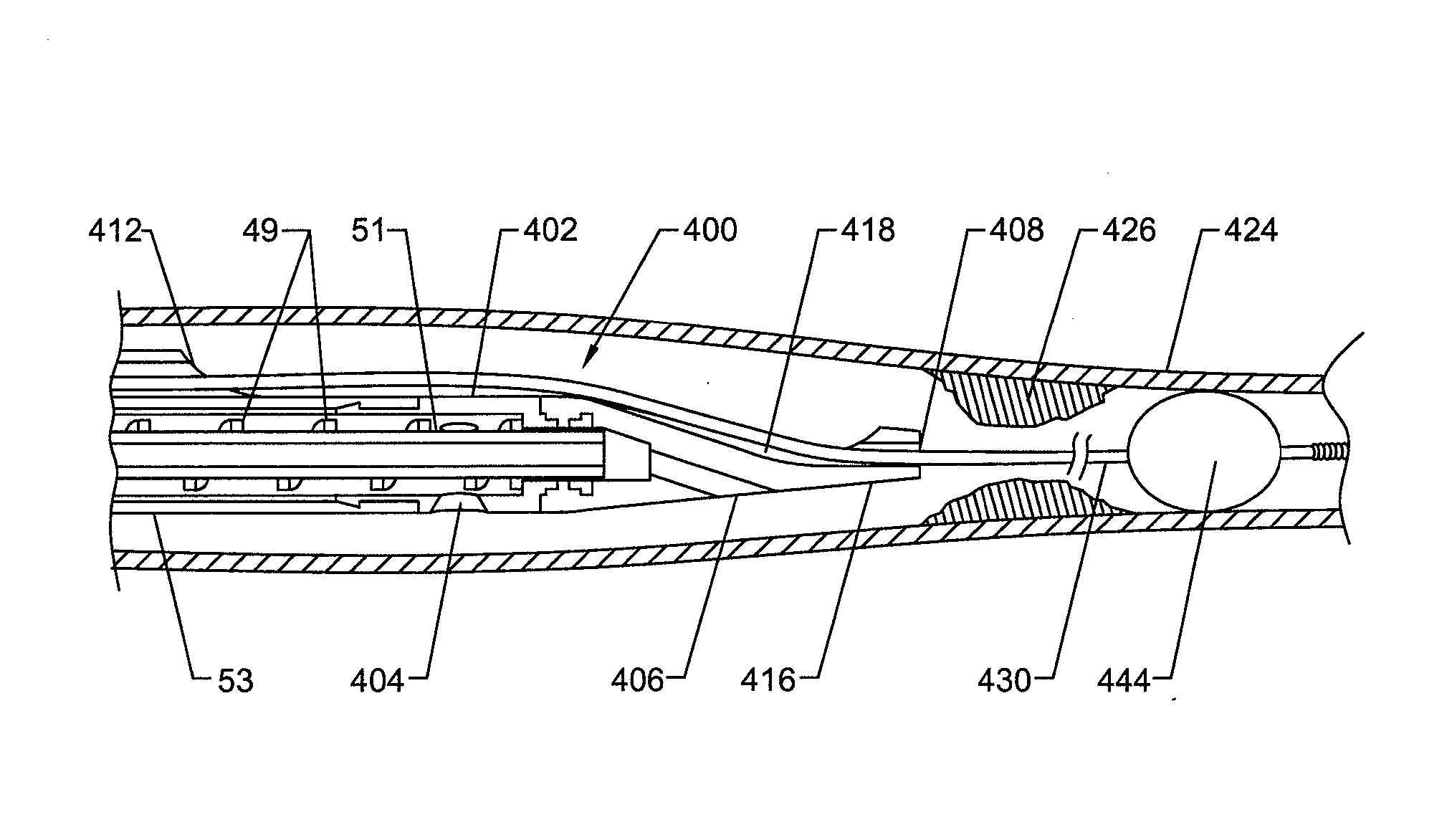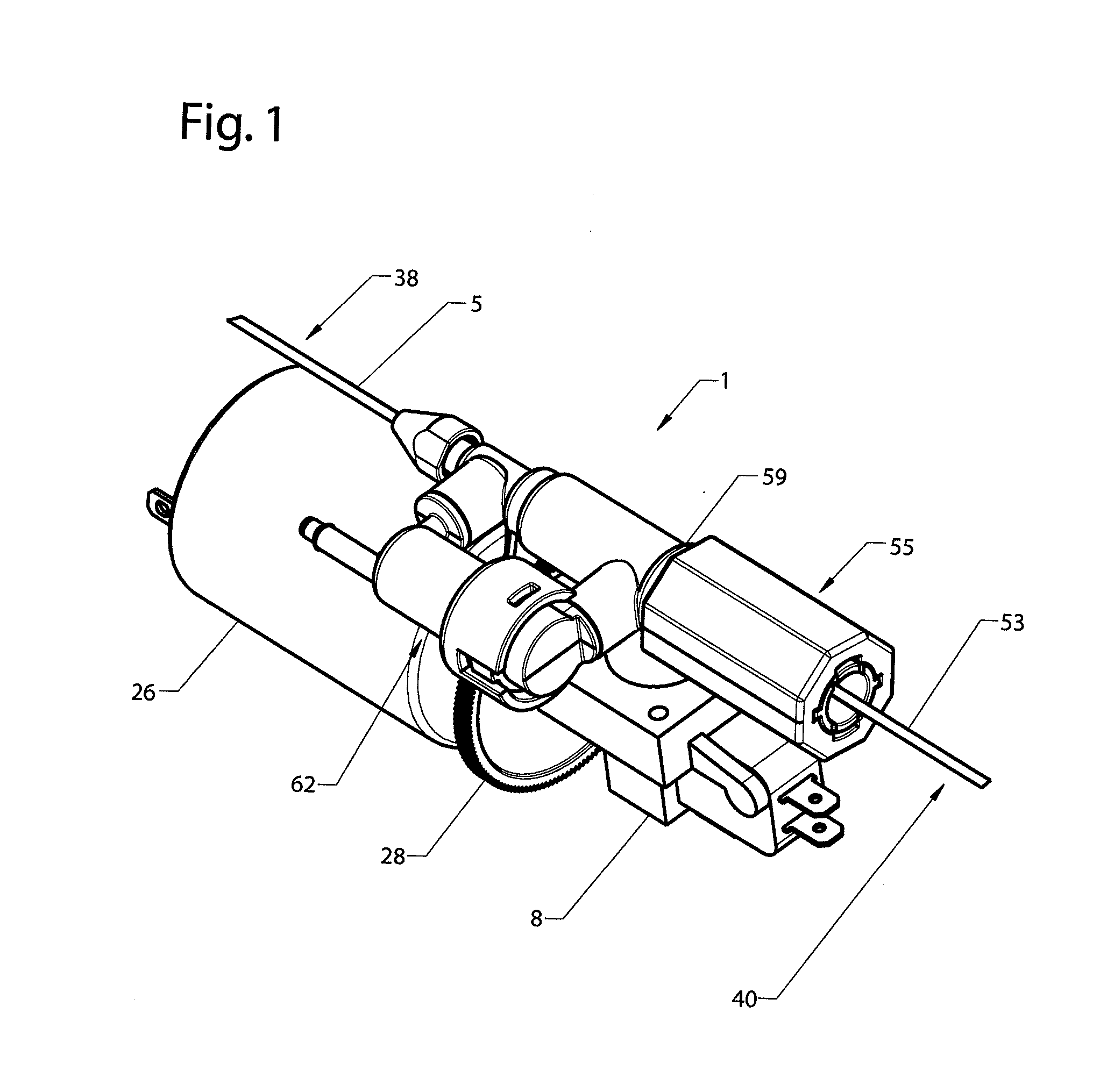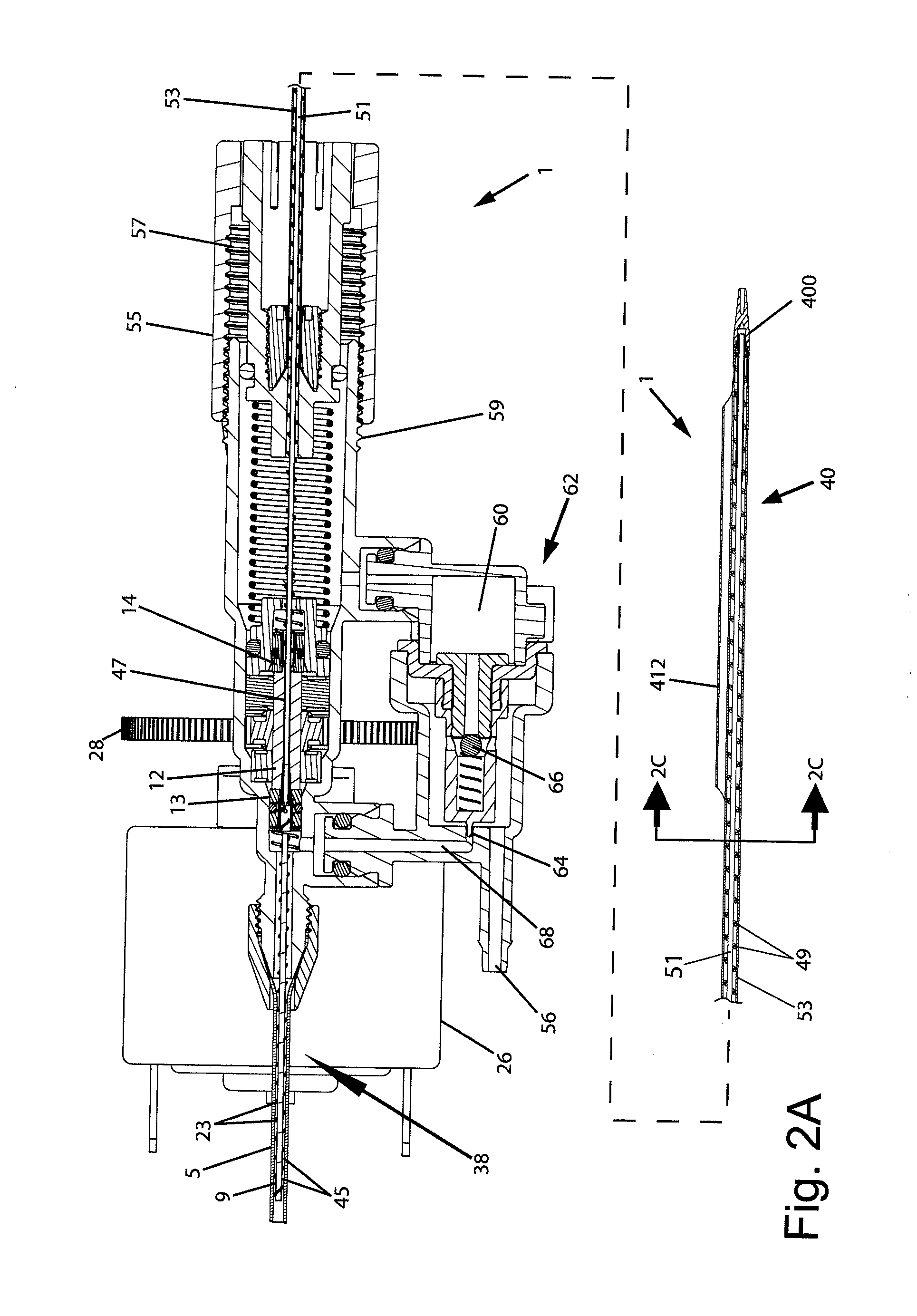Thrombectomy and soft debris removal device
a soft debris and thrombosis technology, applied in the field of medical instruments, can solve problems such as partial or total occlusion of the vessel, and achieve the effects of safely removing obstructions, restoring patency to the vessel, and reducing associated blood loss
- Summary
- Abstract
- Description
- Claims
- Application Information
AI Technical Summary
Benefits of technology
Problems solved by technology
Method used
Image
Examples
Embodiment Construction
[0051] The present invention provides an assembly having a sufficiently narrow crossing profile (for example, the cross-section of the inserted device at its widest point), and also having adequate flexibility such the invention is capable of operating while flexed and navigating into regions of a body of a living being in order to clear occlusive material, e.g. blood clots or plaque accumulation in a blood vessel or lumen.
[0052] The following description describes the catheter assembly, components and features depicted in the figures, wherein like numbers refer to like components.
[0053] In one embodiment, the catheter assembly features a pair of rotary helical pumps, the helical pumps serving the function of aspiration and infusate delivery, and may be operated independently by distinct sources of rotary power (e.g., electrical motors, air turbine, hydraulic, etc.). In an embodiment, the rotor for each of the helical pump mechanisms (infusate and aspiration) are operatively coupl...
PUM
 Login to View More
Login to View More Abstract
Description
Claims
Application Information
 Login to View More
Login to View More - R&D
- Intellectual Property
- Life Sciences
- Materials
- Tech Scout
- Unparalleled Data Quality
- Higher Quality Content
- 60% Fewer Hallucinations
Browse by: Latest US Patents, China's latest patents, Technical Efficacy Thesaurus, Application Domain, Technology Topic, Popular Technical Reports.
© 2025 PatSnap. All rights reserved.Legal|Privacy policy|Modern Slavery Act Transparency Statement|Sitemap|About US| Contact US: help@patsnap.com



